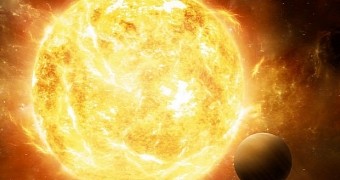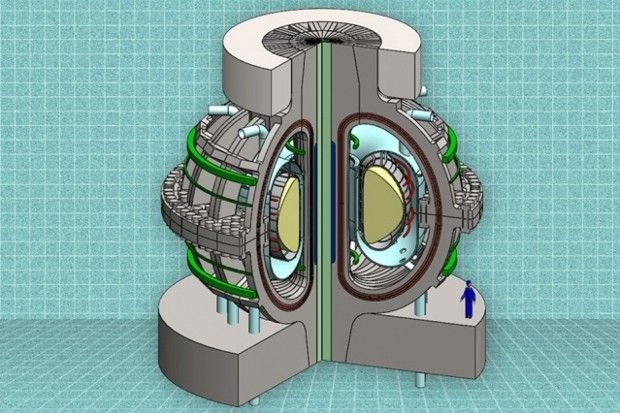In a recent paper in the journal Fusion Engineering and Design, scientists at the Massachusetts Institute of Technology describe a novel donut-shaped reactor that they say would make practical nuclear fusion possible.
Better yet, the researchers claim that this so-called ARC reactor that they have designed could be built in less than a decade. Plainly put, it might be that clean, inexhaustible energy is just years away.
For starters, a few words on nuclear fusion
Nuclear fusion comes down to fusing atoms together and triggering massive releases of energy in the process. By comparison, nuclear fission breaks down atoms to generate energy.
The Sun is a nuclear fusion extraordinaire, as are pretty much all the other stars in the cosmos. It fuses together hydrogen atoms to create helium, and in doing so, it produces loads of energy.
Scientists think that, were we to find a way to recreate this process that fuels the Sun and other stars here on Earth, we would basically tap into a limitless supply of cheap, clean energy.
In fact, researchers are so sure nuclear fusion holds the key to a more sustainable tomorrow they're calling it the “holy grail” of energy production.
The trouble with harnessing nuclear fusion
When it comes to nuclear fusion, the atoms that are supposed to interact with each other to form new ones come in the form of insanely hot plasma.
Before we can even hope to turn to nuclear fusion for energy, we first have to figure out a way to put a leash on this hot plasma and not have it leak heat and atoms all over the place.
“The hard part has been confining the super hot plasma - a form of electrically charged gas - while heating it to temperatures hotter than the cores of stars,” scientists explain.
Magnetic fields might solve the problem
The concept ARC reactor for nuclear fusion proposed by the Massachusetts Institute of Technology team would use magnetic fields to exercise control over the hot plasma used for energy production.
The researchers say that, if strong enough, magnetic fields would effectively trap both the heat and the atoms in the core of their reactor. We'd get energy but we wouldn't have to worry about accidents.
“This is where the magnetic fields are so important - they effectively trap the heat and particles in the hot center of the device,” the team write in a report describing their work.
As for how to produce the magnetic fields needed to control the behavior of the plasma used in nuclear fusion, the researchers point the finger at emerging magnet technologies, i.e. new-generation superconductors.
At least for now, it's all pure talk
If built, the donut-shaped ARC reactor described in the journal Fusion Engineering and Design would first be used to further research fusion. It could also serve as a fusion power plant prototype.
It is believed that, as currently designed, the reactor would produce about 3 times more electricity than what it would take to keep it functional, which is actually quite impressive, considering no other proposed fusion reactor has so far produced at least enough energy to meet its needs.
If proven effective in laboratory tests, the reactor's design could be replicated to build actual power plants. In order for this to happen, however, the reactor would have to prove both safe and effective.

 14 DAY TRIAL //
14 DAY TRIAL // 

